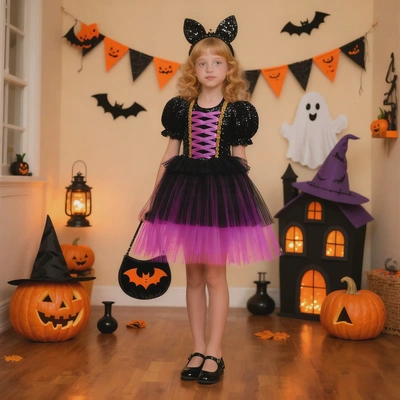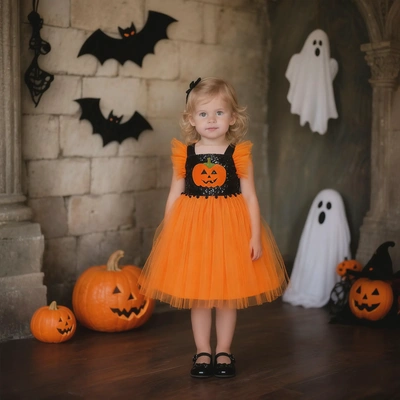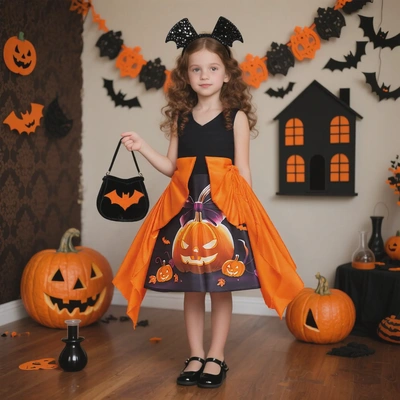Beyond the Sparkle: Which Princess Dress Is Truly Safer for Your Child?
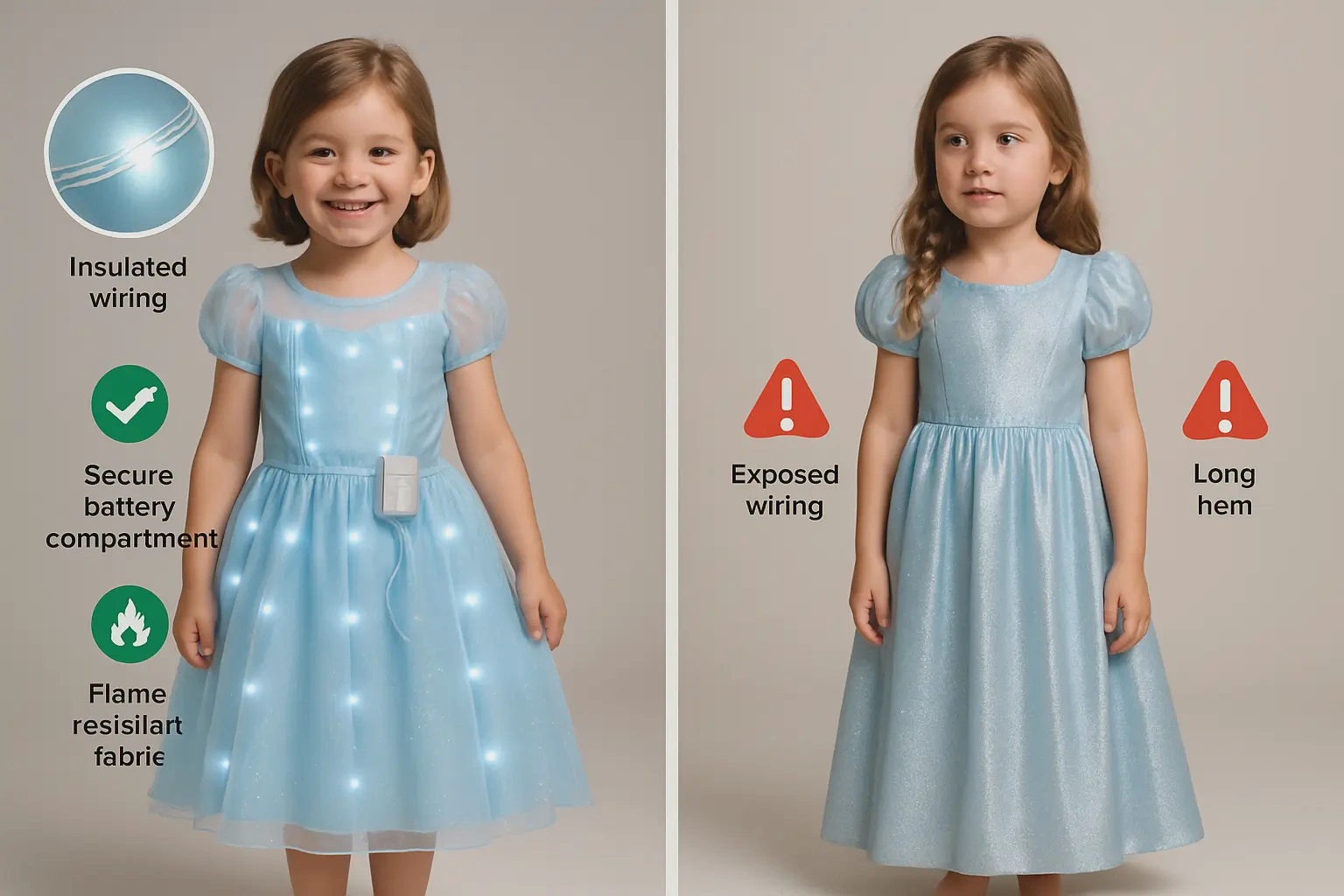
When choosing between a dazzling light-up princess dress and a classic regular gown, safety often becomes a parent's primary concern beyond the sparkle and magic. While both options promise to make your child feel royal, their safety profiles differ significantly in ways that might surprise you.
This comprehensive safety analysis compares light-up and regular princess dresses across material safety, visibility, tripping hazards, and potential choking risks. Discover which option offers better protection for different scenarios and learn essential safety checks for any costume.
Understanding the specific safety considerations for each type of dress helps parents make informed decisions that balance magic with peace of mind. Let's examine the key safety factors point by point.
Why Should Safety Be Your Primary Consideration?
How Do Materials and Construction Compare?
What Are the Visibility and Practical Concerns?
How to Make the Safest Choice for Your Child?
Why Should Safety Be Your Primary Consideration?
7.1.
Beyond the visual appeal and magical transformation, the fundamental purpose of any children's costume is to provide safe enjoyment. Understanding the unique safety aspects of both light-up and regular dresses ensures your child's fairy tale experience doesn't come with hidden risks.
7.2.
Safety considerations extend beyond basic material quality to include nighttime visibility, tripping hazards, and age-appropriate design elements that vary significantly between technological and traditional costumes.
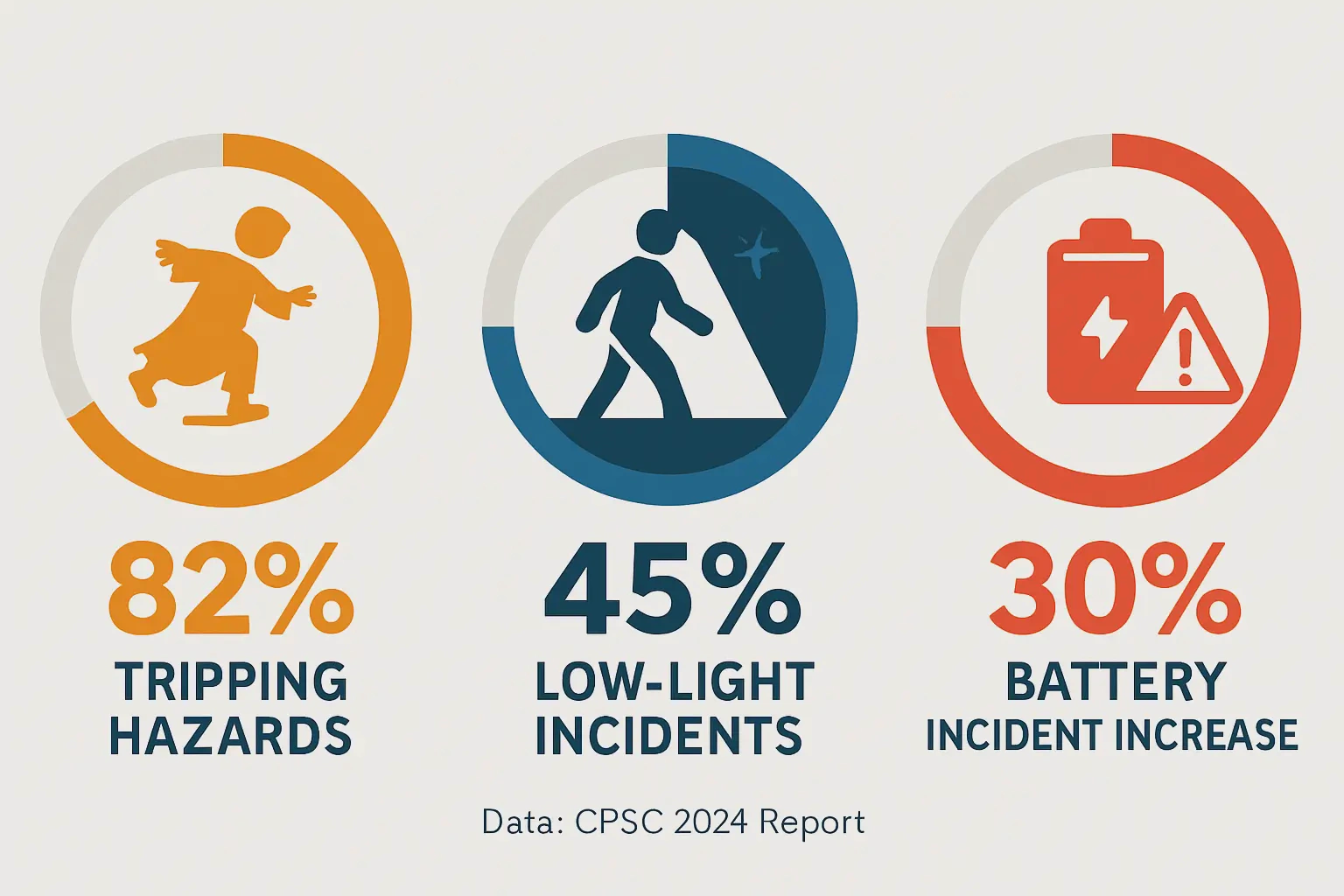
7.4.
Recent data from consumer safety organizations reveals that costume-related incidents often stem from overlooked factors. The U.S. Consumer Product Safety Commission notes that tripping on long hems accounts for the majority of costume-related emergency room visits, while poorly secured accessories create choking hazards. For light-up dresses, the inclusion of electronics introduces additional considerations like battery security and wiring integrity. Understanding these statistics helps parents prioritize features that genuinely protect their children rather than focusing solely on aesthetic appeal.
How Do Materials and Construction Compare?
8.1.
The physical components of each dress type present distinct safety advantages and concerns. From fabric choices to electrical components, understanding material safety helps parents identify potential risks before they become problems.
8.2.
Regular gowns primarily concern themselves with fabric flammability and allergen content, while light-up dresses add considerations for electrical safety, battery security, and additional hardware.
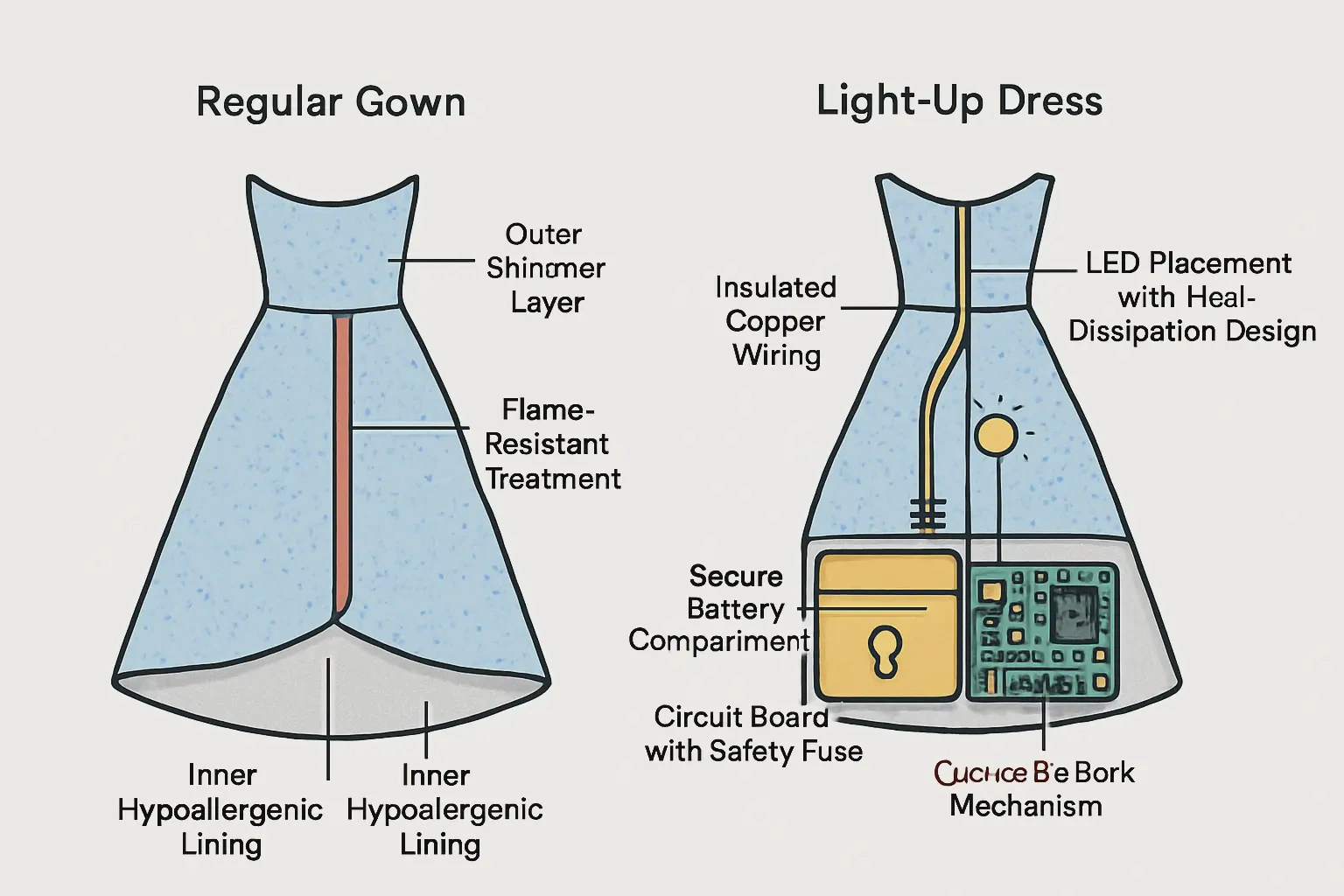
8.4.
Material safety breaks down into several critical categories. For regular princess gowns, the main concerns include flame-resistant fabric treatments (required by CPSC standards), hypoallergenic materials to prevent skin irritation, and secure attachment of decorative elements that could become choking hazards. For light-up princess dresses, safety extends to battery compartment security (must require tool access per FCC regulations), insulated low-voltage wiring that prevents shock hazards, heat dissipation from LED elements, and the use of non-toxic phosphorescent materials. Third-party certifications like CPC or CE marking provide verification that these safety standards have been met.
What Are the Visibility and Practical Concerns?
9.1.
How a costume performs in real-world conditions significantly impacts its safety profile. From nighttime visibility to mobility limitations, practical considerations often determine which dress type offers superior protection for specific situations.
9.2.
Light-up dresses provide inherent visibility advantages in dark conditions but may present mobility restrictions, while regular gowns offer greater freedom of movement but require additional visibility measures.
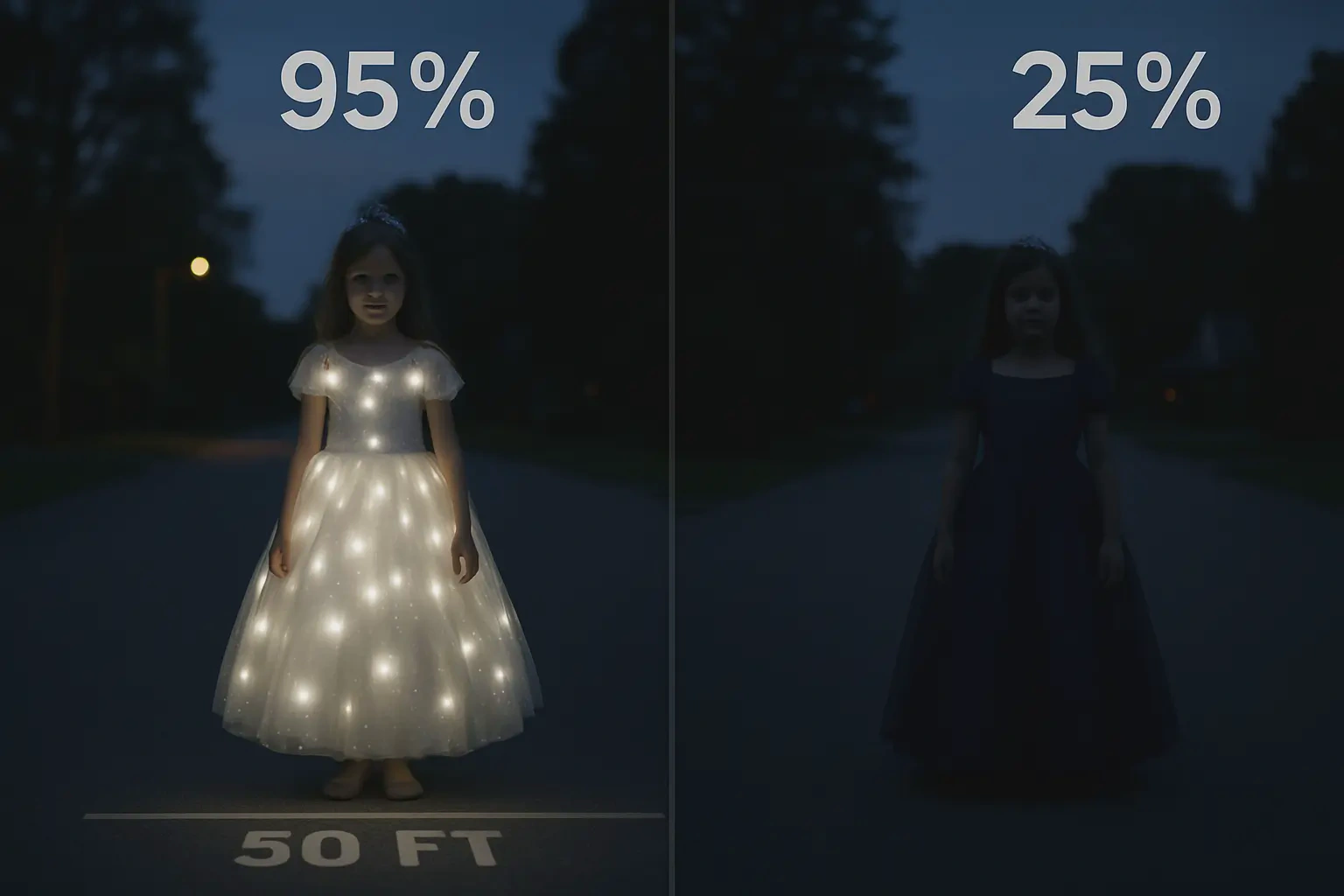
9.4.
The practical safety implications become clear when analyzing specific use scenarios. Light-up dresses offer automatic visibility enhancement, making children detectable by drivers at distances up to 3 times greater than those wearing dark regular gowns. However, their wiring and battery packs can restrict movement and potentially snag on objects. Regular gowns typically allow unrestricted movement but create tripping hazards through excessive length and reduce visibility in low-light conditions. The solution often lies in compromise: selecting light-up dresses with flexible wiring and streamlined battery packs, or enhancing regular gowns with reflective tape and proper hemming for height-appropriate length.
How to Make the Safest Choice for Your Child?
10.1.
Selecting the safest option requires matching dress features to your child's age, activities, and environment. Neither dress type is universally safer—the best choice depends on specific circumstances and proper safety preparations.
10.2.
The optimal choice balances visibility needs, age-appropriate features, and activity-specific considerations while implementing essential safety modifications regardless of dress type.
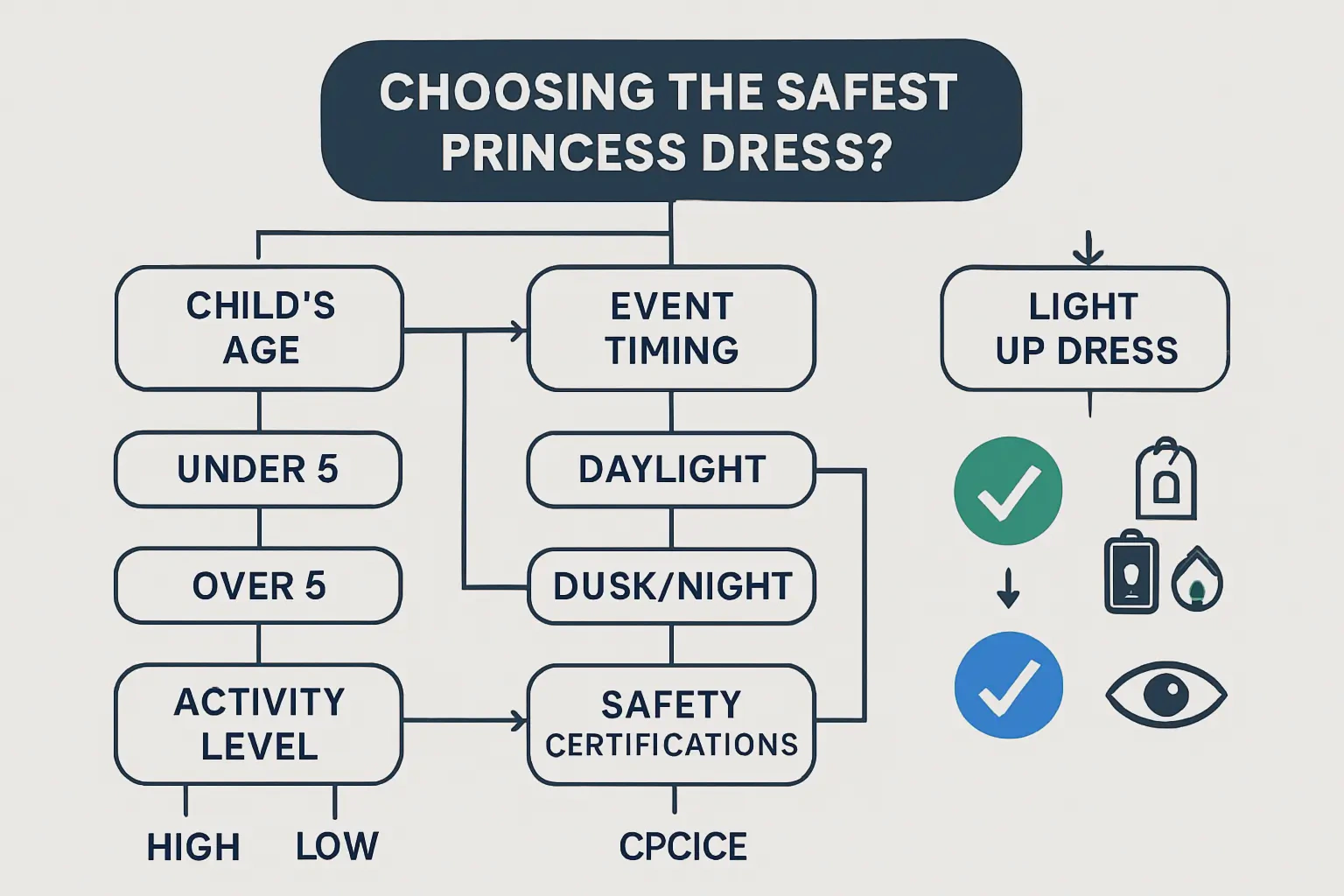
10.4.
Making the safest selection involves evaluating these key factors:
Choose a Light-Up Dress When:
Activities occur in low-light conditions (evening trick-or-treating)
The child is old enough to understand not to tamper with electronics (typically 5+)
The dress has certified safety standards (UL, CE, or CPC marks)
Battery compartments are securely locked and insulated
Choose a Regular Gown When:
Events occur primarily in daylight or well-lit areas
The child is very active and needs maximum mobility
There are concerns about sensory sensitivity to electronics
You can add reflective elements for nighttime visibility
Essential Safety Modifications for Either Choice:
Hem dresses to the appropriate length to prevent tripping
Add reflective tape to regular gowns for visibility
Check for loose accessories that could pose choking hazards
Ensure costumes are worn with proper footwear
Establish rules about keeping costumes away from open flames
The safety comparison between light-up princess dresses and regular gowns reveals that neither option is inherently safer—each presents different advantages and considerations. Light-up dresses offer superior visibility and modern safety features, but require vigilance regarding their electronic components. Regular gowns provide traditional comfort and freedom, but need modifications for visibility and tripping hazards. The wisest approach involves selecting certified products from reputable manufacturers, implementing appropriate safety modifications, and choosing based on your child's specific age, activities, and environment. By prioritizing verified safety standards and practical preparations, parents can ensure their little princess's magical experience remains both joyful and secure.
[External links recommendation]
LEDs for Beginners: Best Types for Cosplay & DIY
DIY Light-Up Dress Sewing Tutorial for a Fairytale Costume
Creative and Safe Ways to Light Up a Princess Dress for Kids
How To Use LED Lights for Wearables: Beginner's Guide
LEDs for Beginners: Best Types for Cosplay & DIY

